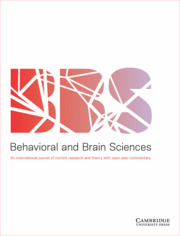No CrossRef data available.
Article contents
Working memory: Unemployed but still doing day labor
Published online by Cambridge University Press: 01 December 2003
Abstract:
The goal of our target article is to establish that electrophysiological data constrain models of short-term memory retention operations to schemes in which activated long-term memory is its representational basis. The temporary stores correspond to neural circuits involved in the perception and subsequent processing of the relevant information, and do not involve specialized neural circuits dedicated to the temporary holding of information outside of those embedded in long-term memory. The commentaries ranged from general agreement with the view that short-term memory stores correspond to activated long-term memory (e.g., Abry, Sato, Schwartz, Loevenbruck & Cathiard [Abry etal.], Cowan, Fuster, Grote, Hickok & Buchsbaum, Keenan, Hyönä & Kaakinen [Keenan et al.], Martin, Morra), to taking a definite exception to this view (e.g., Baddeley, Düzel, Logie & Della Sala, Kroger, Majerus, Van der Linden, Colette & Salmon [Majerus et al.], Vallar).
Information
- Type
- Authors' Response
- Information
- Copyright
- Copyright © Cambridge University Press 2004

